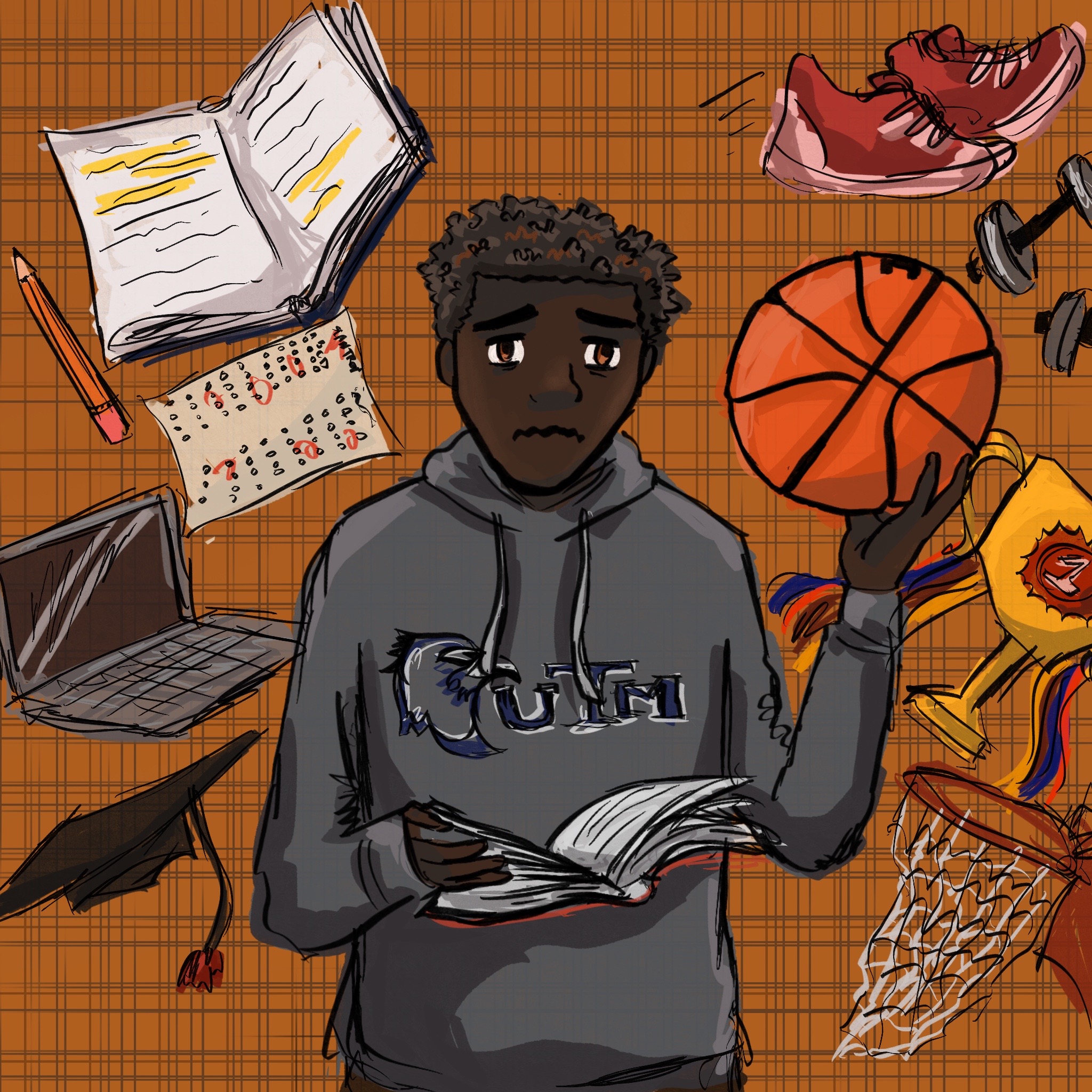Time-managing athletics and schoolwork as a UTM student
How can students schedule schoolwork, commit to their beloved sports, and make time for exercise?
Being a university student is no easy feat. Full-time students spend on average 30-50 hours per week studying, leaving them with little time to socialize, relax, and play sports.
Between balancing projects, clubs, and work, students often lack the time to take care of their bodies. Exercise—whether it be intense or moderate—is essential in maintaining the physical and mental welfare of all students.
So how can student athletes and other students looking to get more involved in sports allocate their time to ensure academic success and physical wellbeing?
Time-management is key
For student athletes, it’s important to recognize their main priorities. Because time is precious, student athletes are limited in their activities and choices. Whether it’s for the next big assignment or the upcoming championship game, a careful assessment will enable them to channel their energies and time on important projects and games without worry of failure or stress.
Building a routine is just as crucial. Through a carefully managed routine, student athletes allow themselves a sense of stability and structure, where they know what to expect every day. Routines will help them optimize their performance by allowing them to sync their body and mind to their schedules.
To save time while studying, student athletes should find a studying technique that best attunes to their personality and schedule. They can rely on spaced repetition, where instead of cramming notes all at once, students would break up their study sessions. For example, in between every practice set, athletes can spend time reviewing notes. There are many other methods athletes can rely on, but it’s ultimately up to them to find a technique that matches their learning style and schedule.
With many time-management tools available online and through the app store, student athletes should depend on these technologies as their allies. A few examples include Todoist, Clockify, and Microsoft To Do. Through these digital planners, athletes can organize their day-to-day activities and tasks. This should enable them to track their progress, ensuring they stay up to date with their practices and assignments.
Workout regiments
Students looking to get more involved in athletics should schedule a time (between classes, after waking up, before sleep, or when brushing teeth) to do a few exercises.
These could consist of leg workouts such as lunges, mountain climbers, or wall sit holds, where the student does the exercise for 45 seconds and rests for 15. Other basic exercises include squats, pushups, burpees, side planks, planks, and glute bridges. A student may choose to do this at home or at UTM’s RAWC, where they can challenge themselves by using the various machines readily available. In each case however, a simple and brief workout is enough to improve physical wellbeing and cardiovascular health.
The stretches students once committed to in high school are also just as valuable as any intense workout. Jumping jacks, quadricep stretches, hamstring stretches, calf raises, downward dog pose, knee to chest, and various more can be done. While they’re beneficial anytime, stretching may have the biggest impact in the morning, as they can revitalize one’s energy and set a positive pace for the rest of the day.
Sometimes even moving around campus can make up for a student’s lack of exercise. From relocating between classes to walking around campus for a better studying location, The New York Times claims that fidgeting and small amounts of movement is better than sitting all day.
Consistency above all
The most important thing to remember for any student is the value of consistency. The Daily Universe emphasizes the need to be proactive and consistent when exercising. Even if the exercise is as basic as taking a walk outside or within one’s home, being consistent every day will help build a stable and healthy routine.
However, it’s crucial to do it out of love and interest. Forcing oneself to build a habit, even if it’s for the sake of a healthier mind and body, may instead cause more harm than good. Finding an exercise that a student enjoys and can be consistent with is more important than forcing any workout routines found online.

